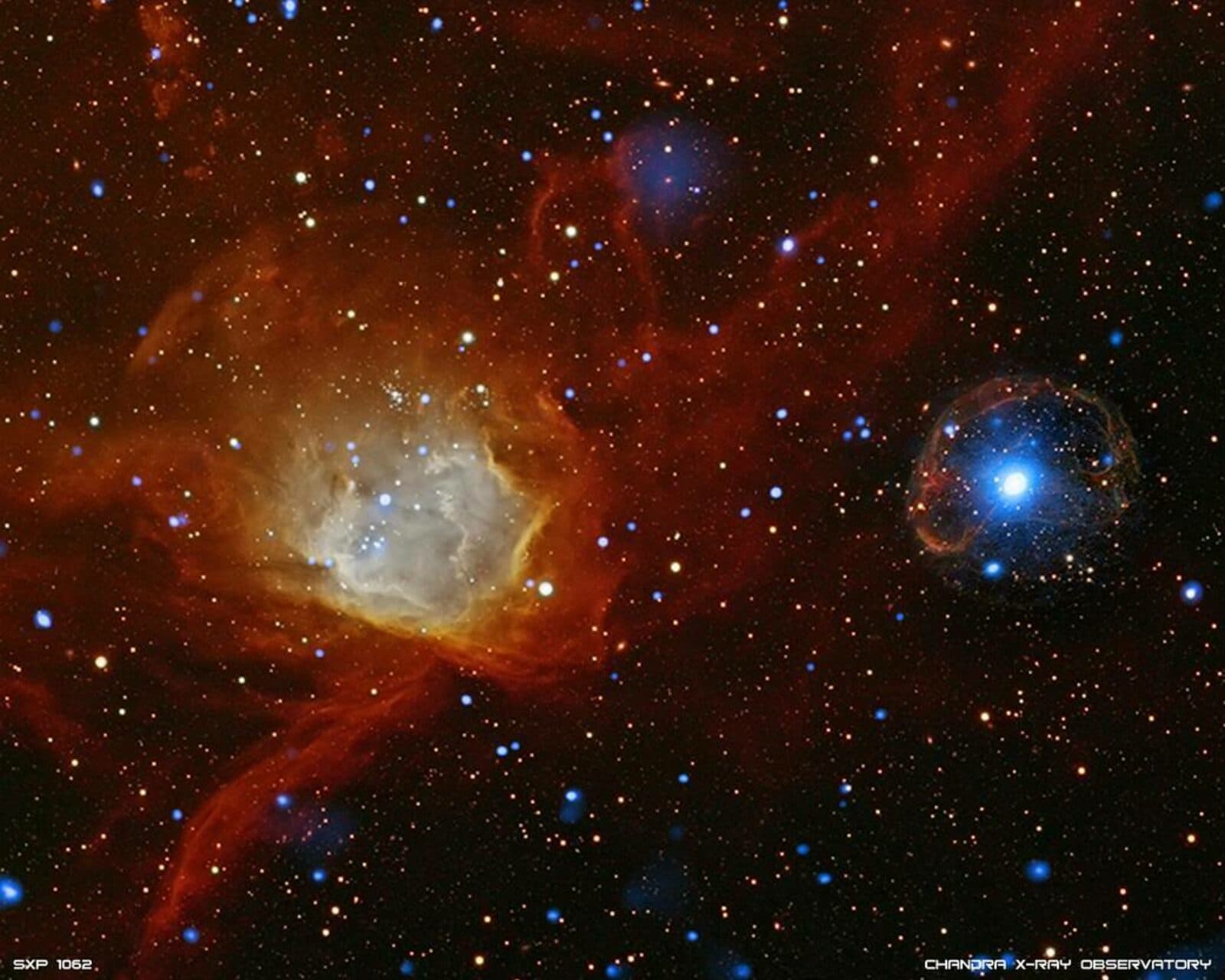Pulsars, Pulsing with Astrophysics
by Adam Hadhazy
KIPAC researchers study whirling stelar cinders for unique insights into matter pushed to the edge

The Author
The Researcher
In a universe chock-full of bizarre objects, neutron stars rank near the top of the list. Although merely the size of a city, pulsars still pack in about one-and-a-half times the mass of our entire Sun. Neutron stars manage to pull off this feat because their extreme gravity crushes atoms so tightly that the atoms' protons and electrons fuse together, forming a hyperdense object composed almost entirely of neutrons (hence the moniker). Even the origin of neutron stars is intense—they're forged when colossal stars cataclysmically explode as supernovae and the dying monster star's pure iron core collapses in on itself.
For reasons not well-understood, a subset of these neutron stars soldier on as even wilder objects, dubbed pulsars. These are neutron stars that spin anywhere from once every few seconds to many hundreds of times per second, sending beams of radiation sweeping through the cosmos like hyper lighthouses.
Measuring the characteristics of those beams is one of the main ways researchers are keying in on how neutron stars and pulsars alike work, in turn helping probe the boundaries of fundamental physics.
"Pulsar emissions are the primary signature of neutron stars, and neutron stars represent the most extreme matter in the observable universe," says Roger Romani, a professor of physics at Stanford University and a member of the Kavli Institute for Particle Astrophysics and Cosmology (KIPAC).
Romani and colleagues are keenly interested in the dividing line between neutron stars and the only objects made of even denser material, namely stellar black holes. (And which are not part of the "observable" universe, seeing as they do not emit light.) Stellar black holes form the same way as neutron stars, when ginormous stars go boom, though in the former's case, the leftover stellar cinder compacts so tightly that its gravity traps light, and the object goes "dark."
The dividing line is one of mass, where the most massive stars yield the most massive cores that, at some threshold, generate the gravity necessary to progress past neutron-starhood and into black holiness. (Forgive the punnery.) Researchers want to better understand this boundary and reap the insights it will provide into how matter behaves in conditions completely unreplicable on Earth.
"I've been chasing down where the neutron star – black hole boundary is," says Romani. "How massive can a neutron star get before it disappears, collapsing into a black hole?"
Pulsars are in fact paving the way to this understanding, specifically a kind of pulsar with the ominous nickname "black widow." These are pulsars that steadily destroy companion stars with energetic outflows, oftentimes gravitationally slurping up some of the scattered matter from their victims. (The nickname derives from how female black widow spiders tend to eat their male partners, an act that gave the spiders their evocative appellation in the first place.) The rate of pulses from some black widow pulsars suggest they've have gobbled up so much matter that they're at the "brink of collapse," Romani says, and could transition into being black holes.
Other important insights into neutron star physics will come via gravitational wave astronomy. It's a field that sprung to life just six years ago with the announcement of the first-ever direct detection of gravitational waves by the LIGO observatory (led in part by members of the Kavli Institute for Astrophysics and Space Research at the Massachusetts Institute of Technology). As LIGO and its ilk capture more events in the years ahead spawned by the energetic mergers of neutron stars, as well as black holes and neutron stars, astrophysicists will gain a vital new dataset. "Gravitational wave signatures can also help once we get a large sample of neutron star-containing mergers," Romani says.
Also helpful will be pulsar pulses not of the usual radio-wave variety measured in abundance since the discovery of pulsars in 1967. "For the radio emission, we are flooded in data," says Romani. "But most of it is 'weather' and it is hard to see how we will cut through this to probe the underlying physics."
Instead, harder-to-corral, higher-energy light, such as gamma rays and x-rays, is now broadening our understanding of the mechanisms driving pulsars.
"For the extreme physics questions, additional measurements of neutron star masses, radii, and surface emissions, especially in the x-ray band, offer good hope of near-future progress," says Romani.
The KIPAC researcher expects this wealth of data will help answer one of the biggest outstanding mystery about pulsars—how the heck do they generate their telltale radio pulses, anyway? "Some plausible models have been proposed," Romani says. "But there is as yet no generally accepted picture."
It goes to show that while neutron stars and pulsars are pushing astrophysics into new frontiers, some age-old, basic questions about these extraordinary objects still need answering.